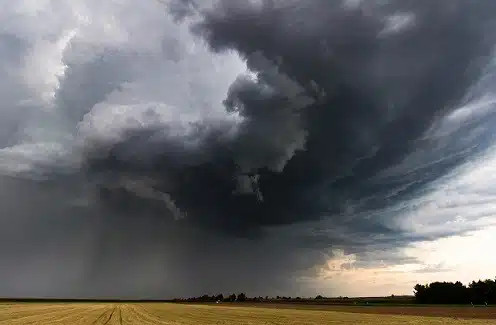
Chances are, if you have encountered a property loss due to a natural disaster, you can vouch for the fact that chaos in your home starts from above. Tornadoes—the devastating precursors to hurricane season—are just another example. Coinciding with early-summer thunderstorms, tornadoes form when the atmosphere is volatile. When warm, humid air from the Gulf meets cool, dry air from Canada, a perfect storm quite literally forms. The overarching issue with tornadoes is their high rate of wind spiraling violently clockwise from great heights. The result is one of the deadliest and most costly forms of all natural disasters. While the extent to which we can control what’s going on in the atmosphere is up for debate, what is certain is that there is help when it comes to repairing your path of ruin down below.
Of course, it’s always best to be prepared. Understanding the structure of your home can help you batten down the hatches before a tornado even touches down. Unfortunately, wood-based structures and mobile homes are common in some of the most tornado-prone areas of the country. Wood can be reinforced through certain proactive tactics similar to those of preparing for a hurricane, but securing mobile homes can get tricky. Contrary to the tale floating around the internet, a family didn’t escape unharmed after their mobile home was blown 130 miles by a tornado. In fact, trailer-based neighborhoods have witnessed some of the highest casualties per capita when it’s come to property, but also to lives. Even if your mobile home is tethered down, make plans to evacuate if extreme thunderstorms are in the forecast for the day. Fortunately, mobile and manufactured homes can be insured similarly to fixed structures.
When it comes to tornadoes, insurance for fixed structures is more straightforward than coverage for flooding in that it does not require a secondary plan or rider policy. However, matters become more complicated when dealing with the aftermath of the disaster, largely because of the complex nature of the damage that tornadoes cause. While, say, flood damage is fairly transparent to the naked eye, tornado damage is much more insidious, attacking key structural points of your home. As discussed, the recipe for a tornado includes extreme volatility. The extreme pressure that results—exacerbated by unsecured windows, front doors, and garages—can cause your home to pick and move. Sometimes this journey is significant, but other times, it’s to a degree that’s too small to be visible to the naked eye.
Despite the real possibility of foundational damage, insurance companies oftentimes treat a tornado claim just like that of any other natural disaster. A single adjuster may be sent out to inspect your home, when really, the individual you may need is an engineer to determine if a crack is cosmetic or has laid roots. Luckily, an attorney can send the appropriate figures to help ensure that the full of extent of your home’s damage is understood. Further, in less extreme cases, tornadoes’ winds can wreak havoc on roof shingles. As you may recall from our discussion on hail damage, insurance companies question whether or not damage existed prior to the incident in question. An attorney can also point you in the direction of a legitimate roof inspector who can assess the age and severity of damage. Roof repair is particularly crucial because water can slip through any holes or cracks, thus causing further damage from moisture and mold. From top to bottom, restoration is possible when it comes to tornado damage, but it can be costly. The right team of attorneys and inspectors can ensure that you get the payout that you need.
Call or message our New Orleans property casualty attorneys at (844) 587-8395 for a free, no obligation consultation.
